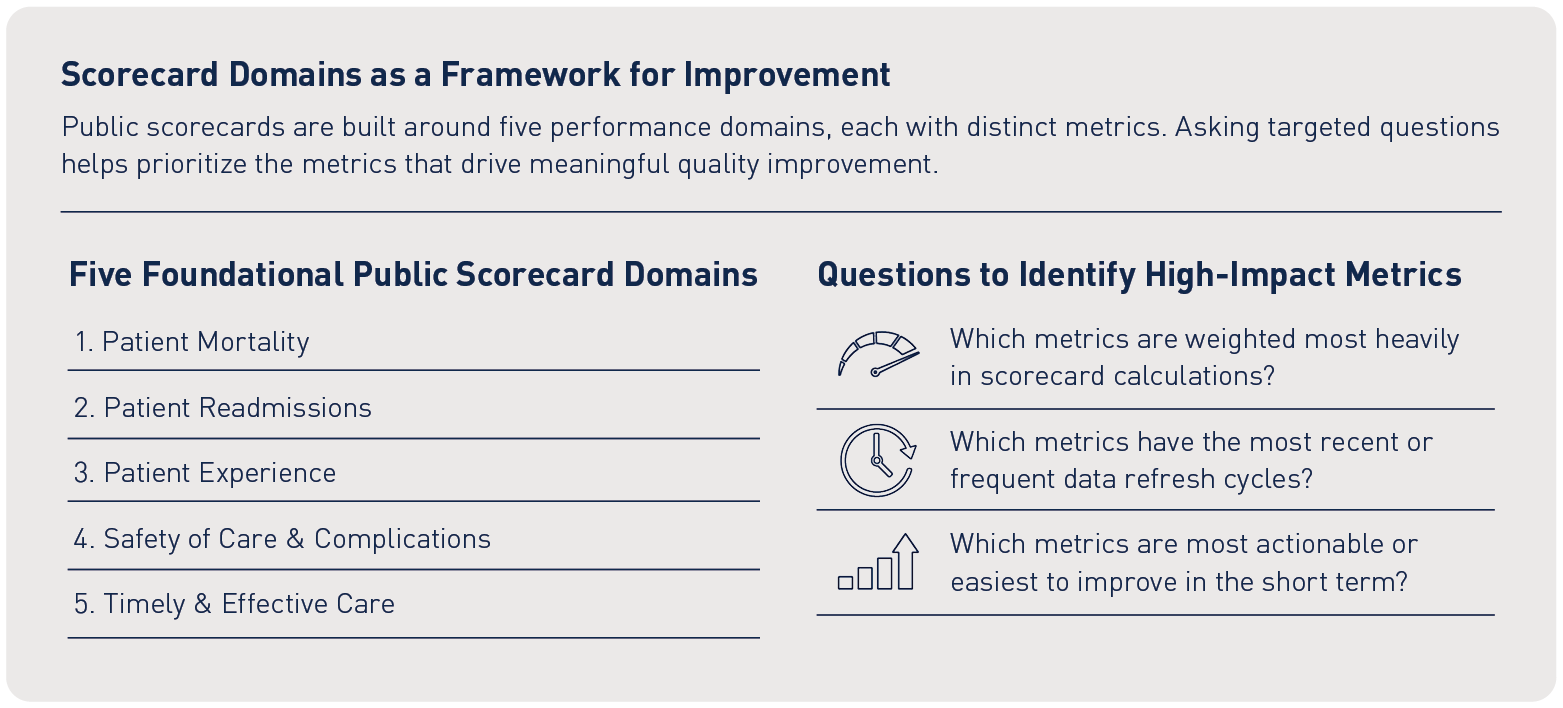Aligning Public Scorecards with Quality Improvement Priorities

Public scorecards such as CMS Stars, the Leapfrog Hospital Survey, and U.S. News & World Report can serve as more than performance snapshots. When used strategically, they provide hospitals with a structured lens to evaluate progress, refine priorities, and align improvement efforts with long-term goals. To effectively connect these insights to tangible outcomes, hospitals should develop a multiyear strategy that translates their mission into scorecard metrics that enhance both clinical and financial results.
The foundation of a public scorecard strategy is a clear framework that defines direction and purpose. Some organizations may be building from the ground up, while others may refine or validate existing plans. In either case, the goal is to create a framework that the hospital can test, adjust, and align with evolving priorities such as regulatory shifts, physician engagement, and market dynamics.
A key element of this framework is a focus on shared performance domains that consistently appear across public scorecards. By concentrating on twenty to thirty high-value metrics within these domains, hospitals can make more strategic decisions, set achievable targets, and apply analytics to drive measurable improvement.
A strategic scorecard approach transforms public reporting into a tool for improvement. By focusing on high-impact metrics across shared domains, hospitals can use scorecard insights to clarify priorities, align their mission, and drive lasting results.


